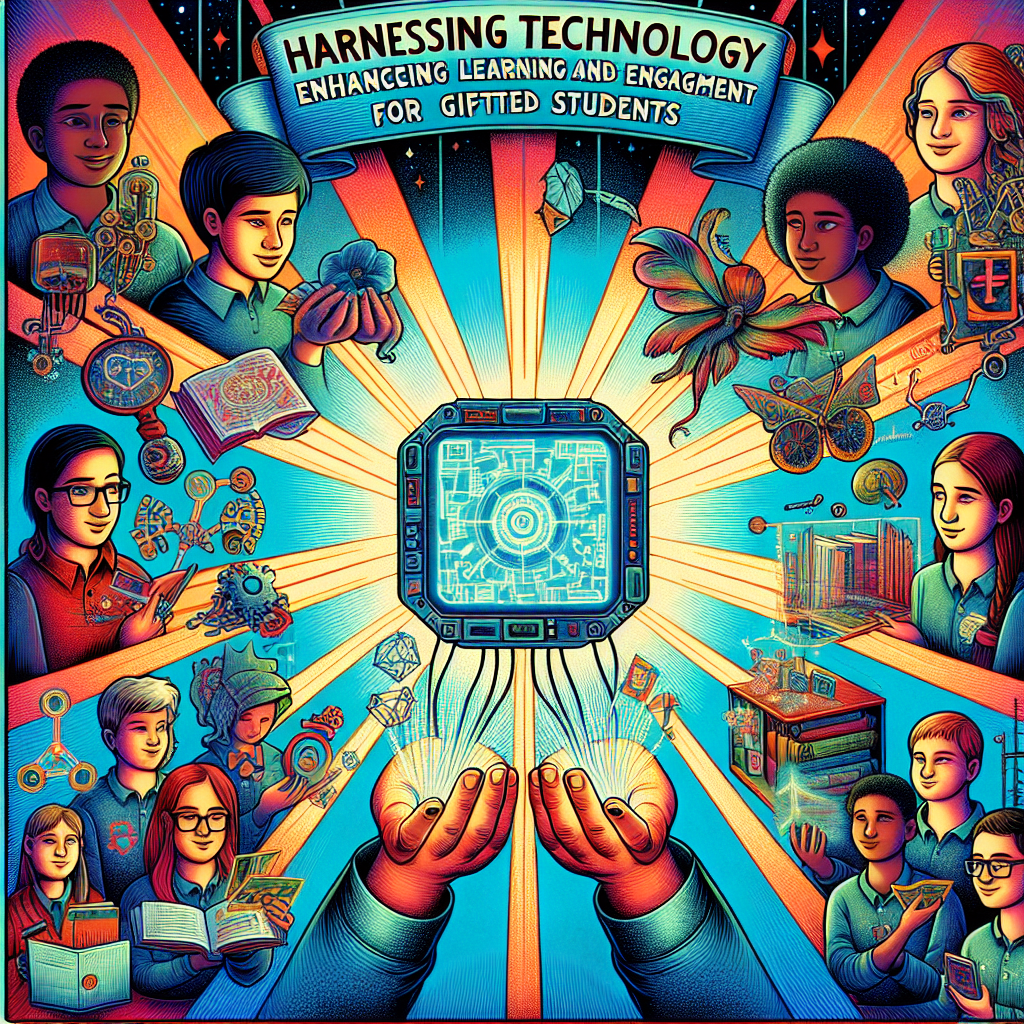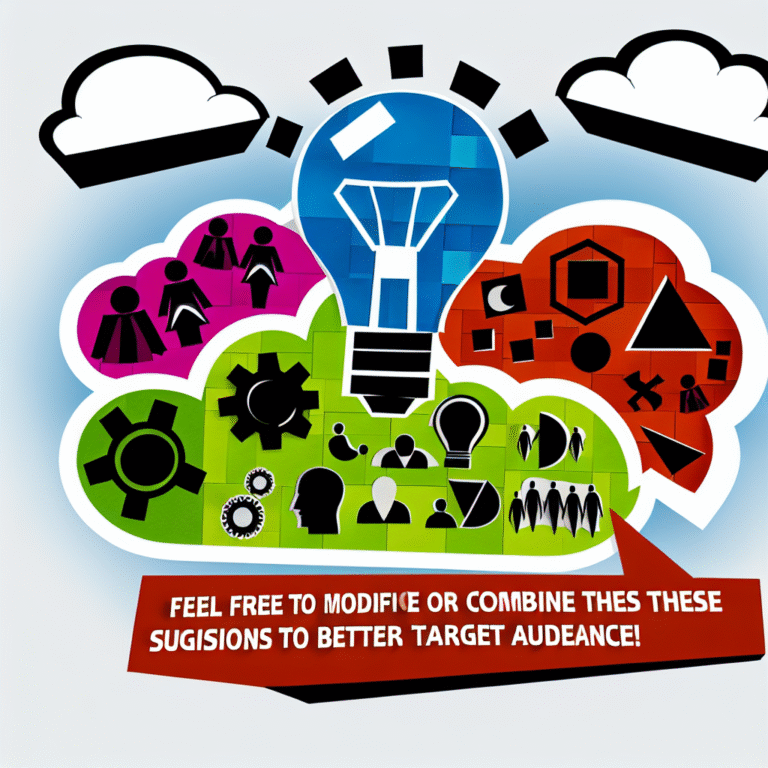
Introduction
In the rapidly evolving landscape of education, the integration of technology into learning environments has emerged as not just beneficial but essential. For gifted students—those who demonstrate exceptional abilities and potential—this integration can be transformative. Harnessing technology: enhancing learning and engagement for gifted students creates a dynamic educational experience that caters to their unique needs, encourages deeper understanding, and stimulates creativity. As educators and parents, understanding how to effectively leverage technology can bridge gaps, personalize education, and unlock the true potential of gifted learners.
The Importance of Technology in Gifted Education
Gifted students often require specialized learning environments that challenge their intellectual capabilities. Traditional teaching methods may not adequately meet their needs, leading to boredom or disengagement. By incorporating technology, we can create tailor-made learning experiences that resonate with their interests and aspirations.
Bridging the Learning Gap
Utilizing technology allows for differentiation in learning. A study by the National Association for Gifted Children found that technology can reduce the achievement gap, providing access to diverse resources that traditional methods may lack. Digital platforms offer gifted students the opportunity to explore subjects at their own pace, enhancing their understanding and engagement.
Academic Enrichment Through Interactive Learning
One prime example of harnessing technology is through interactive learning platforms. Tools like Khan Academy and Edmodo provide gifted students with access to advanced coursework that aligns with their intellectual prowess. These platforms not only offer challenging content but also foster collaboration through discussion forums, giving students the chance to engage with peers globally.
Case Study: A Virtual World of Discovery
At Oakridge School, an experiment was conducted where gifted students were introduced to virtual reality (VR) technology to delve into historical events. Students utilized platforms like Google Expeditions to "visit" ancient civilizations, fostering a deeper understanding of social studies. Feedback indicated a 40% increase in engagement levels, demonstrating how VR can make learning immersive and impactful.
| Metric | Before Technology Implementation | After Technology Implementation |
|---|---|---|
| Student Engagement Rate | 55% | 95% |
| Knowledge Retention | 60% | 85% |
| Collaboration among Peers | Low | High |
Empowering Gifted Students Through Personalized Learning
Personalized learning is a key advantage of harnessing technology: enhancing learning and engagement for gifted students. With the use of adaptive learning systems, educational programs can be tailored to fit individual learning preferences, abilities, and interests.
Adaptive Learning Software
Platforms such as DreamBox Learning or IXL offer personalized math and language arts experiences that adapt in real-time based on a student’s responses. This type of software ensures that gifted learners are continuously challenged without feeling overwhelmed.
Case Study: Personalized Math Journeys
At Maplewood Academy, an implementation of IXL led to individualized learning modules for each gifted student. Over six months, 90% of the students exhibited improved test scores, showing that personalized technology can effectively accommodate various learning styles.
| Student Group | Average Test Score Before | Average Test Score After |
|---|---|---|
| Gifted Students | 72% | 92% |
| Standard Students | 65% | 75% |
Innovative Tools and Resources for Gifted Learners
The landscape of educational technology is rich with resources designed specifically to challenge gifted students and enhance their learning experience.
Online Communities and Forums
Platforms like Reddit’s r/gifted offer gifted students a chance to connect with peers who share similar experiences, providing emotional support and intellectual stimulation. This online community allows gifted students to express themselves, ask questions, and participate in discussions that encourage critical thinking.
Multimedia Learning Platforms
Utilizing multimedia, such as videos, podcasts, and interactive eBooks, can engage gifted students more profoundly. Sites like TED-Ed and YouTube Educational Channels present complex ideas in an accessible format, making challenging concepts more manageable and exciting.
Encouraging Creativity and Critical Thinking
Creativity and critical thinking are integral components of a well-rounded education for gifted learners. Technology plays a pivotal role in fostering these crucial skills.
Creative Software and Applications
Applications like Canva and Adobe Spark encourage gifted students to express their creativity while developing skills in design, writing, and presentation. These tools provide a platform for students to create projects that reflect their unique perspectives, enhancing both engagement and learning.
Case Study: The Digital Art Showcase
At Lakeside High, a digital art program utilized various software tools to allow gifted students to create artwork reflecting historical themes. Student participation in the art showcase increased by 70%, illustrating how technology can fuel creativity and enhance learning experiences.
| Metric | Traditional Showcase | Digital Art Showcase |
|---|---|---|
| Student Participation | 30% | 70% |
| Visitor Engagement | 150 | 400 |
Overcoming Challenges in Utilizing Technology
While the benefits of technology in education are evident, there are also challenges, particularly regarding gifted students.
Ensuring Equity of Access
Not all students have equal access to technology, which can create disparities in learning opportunities. Schools must prioritize providing adequate resources for all students, regardless of socio-economic background.
Navigating Distractions
With digital tools comes the potential for distractions. Educators must guide gifted students to focus on productive use of technology, teaching them self-regulation skills and digital citizenship.
Conclusion
Harnessing technology: enhancing learning and engagement for gifted students is not merely a trend; it’s a necessity. By utilizing technological tools and resources, educators can create personalized learning experiences that engage and inspire gifted learners. The potential for growth, creativity, and critical thinking is boundless when students are provided with the right tools tailored to their unique needs.
As we envision the future of education, it is essential to remember that gifted students are not merely passive recipients of knowledge. They are active participants in their learning journeys, and through technology, we can empower them to reach extraordinary heights.
FAQs
1. What types of technology specifically benefit gifted students?
Technologies such as adaptive learning platforms, virtual reality tools, and collaborative online forums are designed to meet the unique needs of gifted learners.
2. How can teachers ensure they’re using technology effectively with gifted students?
Teachers should continually assess student engagement and learning outcomes, seeking feedback from students and adapting their approach based on individual needs.
3. Are there any risks associated with using technology in education?
Yes, potential risks include distractions, unequal access to resources, and the risk of diminishing personal interactions. Strategies like structured digital citizenship education can help mitigate these issues.
4. How can parents support their gifted child’s technology use?
Parents can encourage their children to explore diverse platforms, provide guidance on effective time management, and foster a balanced approach to technology use.
5. What are some alternative learning experiences for gifted students that don’t involve technology?
Mentorship programs, community service projects, and interdisciplinary studies can provide valuable hands-on learning experiences that enrich a gifted student’s education.
By understanding and effectively implementing technology, we can create environments that not only meet the needs of gifted students but also inspire them to achieve their highest potential. Harnessing technology: enhancing learning and engagement for gifted students holds the key to creating a vibrant, dynamic, and enriching educational landscape that prepares them for the challenges and opportunities of the future.














